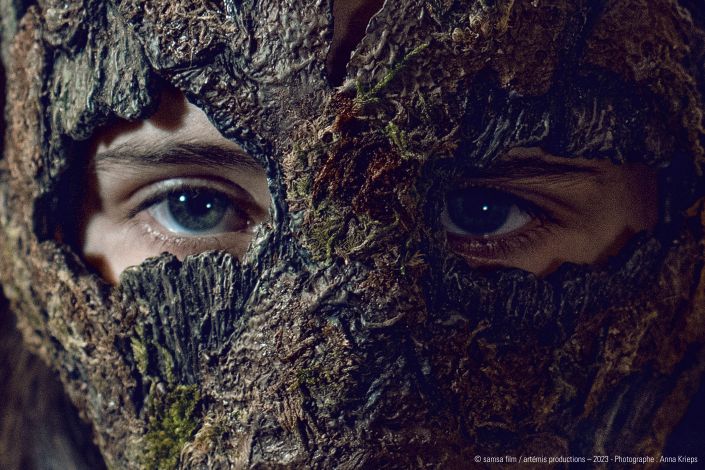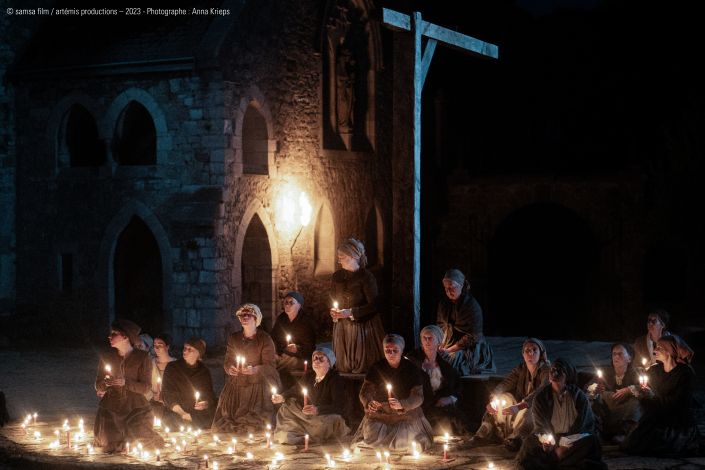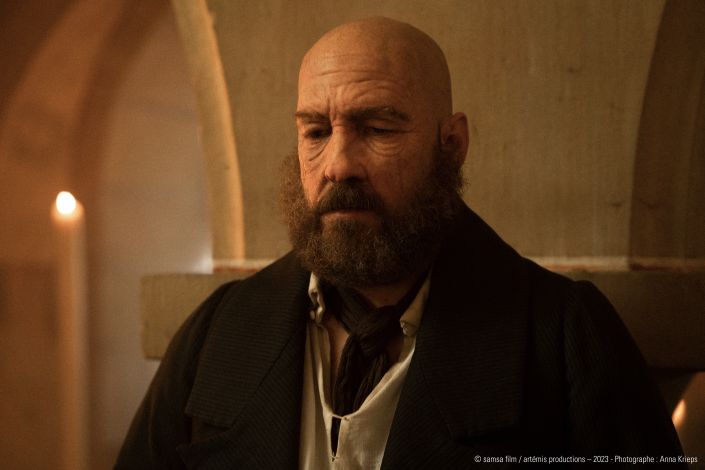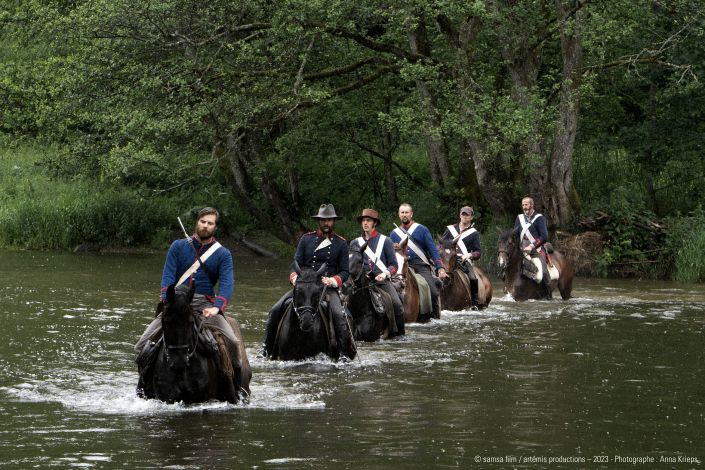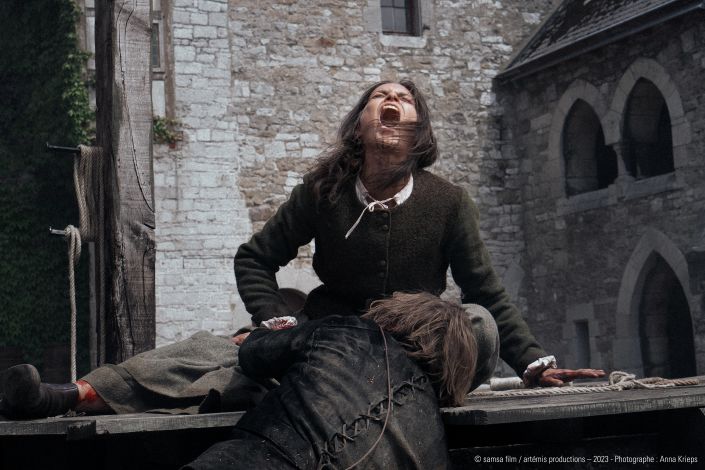THE LAST ASHES Review: Female Driven European Western
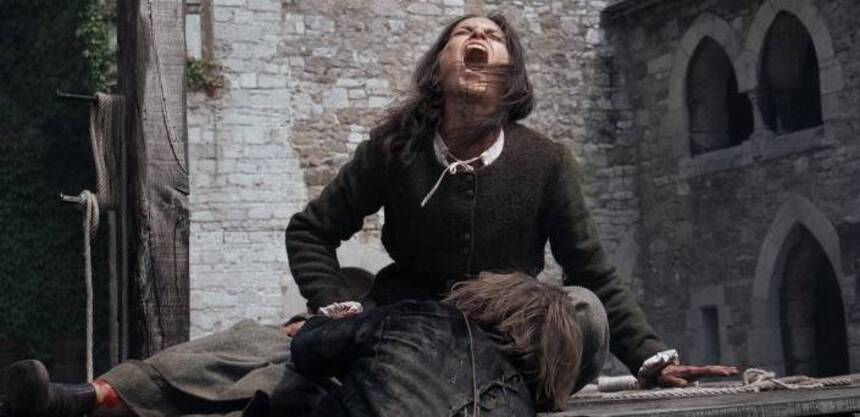
Twelve year-old Heléne lives with her family in a commune up in the remote north of Luxembourg. Ruled by the Graff family - a father and his three sons - they have isolated themselves from society, establishing a patriarchy backed by religous devotion. As Heléne’s coming of age ceremony approaches her parents have doubts about the virtues of the commune and its leader and plan to leave.
No one simply packs up and leaves the Graff commune and Heléne’s parents are assassinated on the outskirts. Left to die, Heléne manages to escape and returns years later, determined to seek her revenge. Slowly she chips away at the psyche of a withered and perilously fragile commune, battered by illness, high infant mortality, and progress of the outside world inches closer, one railroad tie at a time.
Sophie Mousel stars in Loïc Tanson’s female-driven European Western, The Last Ashes. The film was the official submission of Luxembourg for the 'Best International Feature Film' category of the 96th Academy Awards in 2024.
Older and disguised, her face bearing Indigenous tattoos on her chin, suggesting that she had likely spent time among those cultures somewhere in North America, Heléne now calls herself Oona. She returns fifteen years later and infiltrates the Graff compound, a honest to goodness stone and mortar castle in the middle of the wilderness. She brings promise to the community for she is not sick - they go as far as to ask her if she is ill - and thought it is not said out loud it appears to be a respiratory illness, tuberculosis seems likely.
If she is not ill she may also be able to birth the next heir to the Graff family. Graff’s sons leer at her as she walks through the compound with her guide, Marie. Once a girl she knew before trying to escape the Graffs Marie is now married to the eldest brother and is carrying his child. Due to illness or a limited gene pool due to their isolation there is high infant mortality here. No one has been able birth the next heir. Or, as one scene suggests later on, it might be something else.
By now you should be able to determine that The Last Ashes is more of the slow-burn variety of revenge thrillers. Presented on a historical canvas Tanson’s story, written together with Frederic Zeimet, plots its path carefully. Not everything should fall apart at the first sign of trouble. Now a part of the community, Heléne/Oona begins to sow seeds of feelings such as doubt, fear and mistrust. She picks away at the outliers first. Some show up dead and others go missing. Property gets damaged. Together with the arrival of soldiers assigned to protecting a rail crew building a railway that will connect the north with the south everyone is on edge. The Graff brothers are itching for a fight at every turn.
Tanson shakes up their sedate narrative with artistic flourishes. To start, the prelude when Heléne’s parents meet their fate is presented in black and white within the smaller, traditional 4:3 aspect ratio before bursting into full color and the wider 16:9 ratio when she returns to exact her revenge. As we meet other players in this revenge tale the camera zooms in narrow on Heléne’s targets, singling them out, giving moments for the viewer to make the connections from her past. They are nods to the work of camera operators and directors from the bygone days of the Western genre. A handful of times they also employ slow camera rotations, perhaps signalling the slow unravelling of the community as events unfold.
Tanson evokes symbolism with the bent bow of a sapling on the outskirts of the compound. Highlighted in the prelude is shown again at the end. acting as a gateway of the damned. Every time Heléne passes underneath it violence has preceded those moments, violence that set her on her path fifteen years ago, and violence that she has exacted in her revenge.
The Last Ashes builds towards its end effect and Heléne’s revenge is carried out. It becomes an emotionally complex conclusion to the story as revenge is carried out and not as one may hope. Does revenge not go as Heléne planned? Well, no, because revenge is not just her’s to dish out. The right people die, sure, but not all by her hand alone.
We have to remind ourselves that she has been gone for fifteen years. The commune had to live under the heel of this patriarchy every day since she fled. She was not the only one to suffer under the tyranny of the Graffs. She is not the only one who, if given the chance, would lash out at their oppressors. Heléne’s presence, manipulation, and deceit have given others the chance to last out as well.
Is The Last Ashes guilty of hitting the proverbial nail on the head too hard? That revenge is not a morally uplifting act? Heléne looks utterly defeated at the end, her head hangs low as she rides out beneath the same bent sapling where she started her journey all those years ago.
We are left to decide for ourselves if she is completely spent after getting her revenge, or, and hear us out, not killing all the Graffs herself has left her defeated in what should have been her moment of victory over those who sent her down this path all those years ago.
The victory is not just Heléne’s but anyone else who survived the day.
The Last Ashes
Director(s)
- Loïc Tanson
Writer(s)
- Loïc Tanson
- Frederic Zeimet
Cast
- Sophie Mousel
- Timo Wagner
- Jules Werner







Do you feel this content is inappropriate or infringes upon your rights? Click here to report it, or see our DMCA policy.


